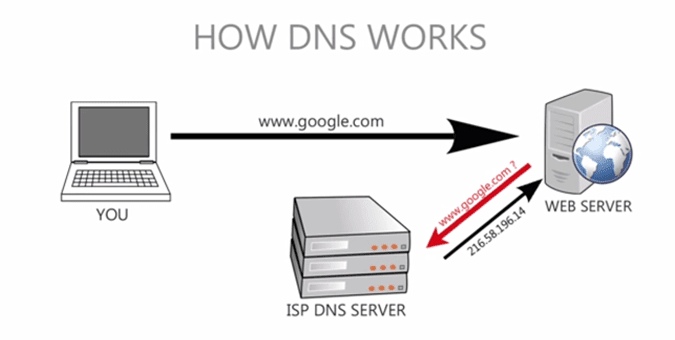
How Domain Name System(DNS) Functions?
DNS: Domain Name System
This functions as, when the user enters the URL in the web browser, Domain Name System helps in contacting the correct web servers which are available in the internet. Datas are growing day by day. To organise the infrastructure of the data, these DNS provides various facilities.
Operational overview:
When the user types www.google.com, It doesn’t directly targeted to the google server. Instead it goes to the DNS server, were it consists of number of table and contains numerous data. The Server tries to match the URL which is given by the user and then then the web browser will display the content.

Domain Name System:
DNS server has three levels of domain name system. They are top level, second level and the third level.
Eg: www.google.com
Top level domain : .com is the top level domain. The top level domains are, .com, .in, .gov etc.,
Second level domain: google is the second level domain.
Third level domain: www is the third level domain
When the user types URL in the web browser, the top level domains are processed first and then goes for second-level domain. Then at last, DNS servers resolves the third level of domain.

Features of sub domain:
www is named as subdomain. Other than this there are many subdomains. Eg: pop,irc etc., pop is used for the email communication. DNS server communicate with the IP address. Many has same subdomain, so they can be assessed from any geographical place. But this also allows redundancy. Many websites may have the same subdomain and top domain, but all the sites have different second domain name. The second name can be used unique. They differ from each site.

User benefits :
DNS servers allows people to use all internet resources without IP or port address directly. In each geographical areas, the websites are hosted in different web servers. These are hosted like this for security reasons. This DNS is the simplest way of tracing the server and projecting in the user side of the web browser. This makes people to memorise the URL, that are simple rather than memorising complex IP and port address. This allows some private servers to come in contact with the web servers with private IP address. These servers can also be known publicly.

